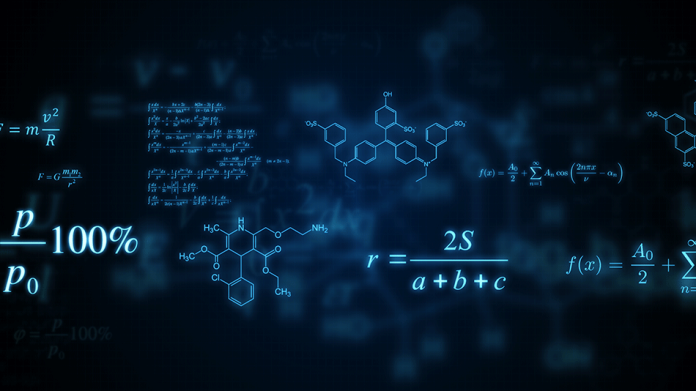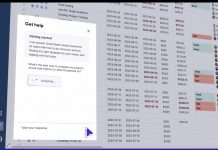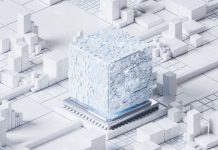At the imminent dawn of our artificially intelligent societies, a profound question arises: To what extent will artificial intelligence reshape our professional landscape?
It’s becoming clear that the role of humans in this dance of progress is increasingly being questioned. Whether embraced with enthusiasm or apprehension, the undeniable reality is that many stand on the edge of change, with AI poised to redefine professional structures.
In the automotive industry, autonomous vehicles are one of the major innovations. AI powers these vehicles, allowing for real-time driving decisions. Companies like Tesla, Waymo, and others are actively working on advancing this technology.
In healthcare, AI is used for early disease detection through the analysis of medical images. It can help spot tumors or other abnormalities in X-rays or MRIs long before a human eye can discern them.
In the financial sector, robo-advisors are automated platforms that provide financial advice and manage clients’ investment portfolios based on algorithms. Companies like Betterment and Wealthfront utilize AI to optimize investment strategies.
In agriculture, AI is employed for crop management and yield forecasting. Through drones and sensors, farmers can monitor their fields in real-time, detect diseases or pests, and predict the water or nutrient needs of their crops.
In retail, many businesses use AI for product recommendations. Giants like Amazon and Netflix suggest products or movies based on users’ preferences and purchase or viewing histories, using machine learning algorithms to continuously refine their suggestions.
Each of these examples showcases how AI can not only enhance efficiency and accuracy across various sectors but also create new opportunities and challenges in the job market.
As we move towards this inflection point, the core reflection goes beyond the mere substitution of roles. The challenge lies in understanding a new balance that’s somewhat difficult to predict: Will the jobs erased by AI be outnumbered by those it creates? Will it be a 2 to 1 ratio, 3 to 1, or perhaps an even more contrasting equation?
First and foremost, AI will not replace anyone – it will replace specific jobs currently held by individuals. It’s a subtle distinction.
We shouldn’t reduce human life solely to a job. To reduce the essence of an individual only to their profession is a gross oversimplification.
At the heart of this issue is an equation: the Ratio R=D/C where D represents the jobs Deleted due to AI and C denotes the new jobs Created by AI.
The perspective, often driven by fear, which paints a future where AI would erase more jobs than it creates, assumes R > 1.
However, other variables are often overlooked or underestimated, such as:
Jobs Maintained (M) without significant change, because they require a human touch that’s hard to automate since error and imperfection are part of the creation process and what adds charm (e.g., hairstylists, artisans) or because understanding human nuances is crucial (e.g., psychoanalysts, sociologists, career counselors).
Jobs that Shift (S) to become more tech-oriented or require a different skill set, like professions in the fields of medicine, graphic design, or journalism. Here, AI-based tools allow for data analyses or provide insights into emerging trends on subjects like corporate financial outcomes or sports statistics. These roles are adapting to incorporate more data analysis skills.
Jobs Enhanced (E) by AI but still requiring human intervention, like Sales Assistants, call center operators, or truck drivers, where AI could handle driving over long distances or on highways, but human intervention remains vital for more complex situations like city driving.
The Total (T) of jobs in an economy is better represented by the sum of D+C+M+S+E.
The ratio ‘R=D/C’ does not fully capture the potential footprint of AI on the job market by itself.
For the claim that a significant portion of jobs would be replaced by AI to be true, it would require R=D/(T-D) with R > 1.
But it’s not that simple.
The impact of new technologies on the job market has always been a topic of debate among economists, historians, and labor market experts. Historically, the introduction of new technologies has often led to a phase of disruption, followed by a period of adjustment, and ultimately a net job creation or new opportunities.
Based on these historical trends, several AI impact models can be considered:
Will it be a logarithmic growth?
In this case, the impact of AI on job losses could be swift, eventually slowing down over time. This could be a reasonable assumption given that the first jobs to go would be those that are easily automatable, and over time, it would become increasingly challenging to replace jobs requiring unique human skills.
Or will it be an exponential growth?
In this scenario, the impact would accelerate over time, which might be the case if AI technology progresses rapidly. However, this could be overly pessimistic, as even with technological advances, regulatory, ethical, or practical barriers might slow down a full AI adoption scenario.
Or will it, in the end, be a more nuanced growth, a polynomial growth?
Here, one would need to consider phenomena of peaks and valleys in AI adoption and therefore its impact on employment. For instance, a rapid introduction of AI might lead to many job losses, but as the technology matures and society adapts, new jobs might be created or transformed.
Given the history of technological innovations, from the industrial revolution to the digital revolution, a scenario combining elements from both the logarithmic and polynomial models might be among the most realistic.
This would mean that the initial impact of AI on job losses would be quick and disruptive, but it would slow down over time (logarithmic). Then, as new uses for AI emerge and the technology matures, there could be fluctuations in how AI impacts work (polynomial).
To potentially grasp these dynamics, revisiting our equation where we left off, we might have R = D / (a * log(b * (T-D)) + c * (T-D)^2), where a, b, and c are constants to be determined empirically.
In addition to the trend of this non-linear impact, for a future where AI would eliminate more jobs than it would create (thus R > 1) to happen, this would imply that several undesirable contextual conditions and situations would have been made possible. Some of these would arise as a constant, others intermittently, with certain factors of concomitance between them:
Firstly, the assumption suggesting that there is a fixed Quantity (Q) of work to be done, and that if AI does more, there will be less for humans, should this time prove correct, given that historically, employment volume has never been a zero-sum game (referring to what economists call the ‘lump of labor fallacy’).
Next, AI systems should not only automate certain tasks but also Largely (L) replace, in a significantly impactful manner, the tasks that make up entire professional roles, representing a substantial portion of the job market. This would mean that within the scope of this share, these systems would perform these jobs without requiring human roles, supervision, monitoring, or additional human tasks.
Furthermore, the Development (D) and adoption of AI technologies would have to progress at such a fast pace—without plateauing after rapid growth due to physical, economic, or other constraints—that retraining or transition opportunities for the affected workforce would be unattainable.
Also, it should be significantly more cost-effective for companies to implement and rely on AI solutions than to hire human workers. This economic inclination should be so pronounced that companies would prefer AI even if it’s not perfect, and there should be no regulatory restrictions curbing this Preference (P). For instance, if AI could autonomously write original movie scripts at a lower cost than humans, with quality equal to or even surpassing the most original human-produced scenarios, film production companies might favor AI over hiring script writers. And all this would occur in a context where no regulation would hinder this adoption for ethical or cultural reasons.
Moreover, the implications of AI for security (S), private Life and individual rights should not be deemed major societal concerns. This would imply that there’d be no ethical constraints limiting the areas where AI operates autonomously, especially concerning areas involving decisions that have a significant direct impact on human lives. One example is the question surrounding the use of facial recognition.
Additionally, the environmental footprint resulting from the Widespread (W) replacement of numerous human jobs by AI systems—due to the increased computations inherent in these systems and the infrastructure needed for their operation—would not be viewed as alarming or a potential threat to life on Earth.
Lastly, all the Negative Impacts (I) of AI on mental health, whether due to job losses, societal changes, or the heightened dependency on technology, which would ultimately impoverish social interactions essential for the physical and psychological well-being of humans, would have been widely overlooked or outright ignored by society.
The exact form of the function f(Q, L, D, P, S, W, I) describing how these variables interact would depend on precisely how these variables influence the ratio R, which would require a deep understanding of the interactions between these factors and their impact on employment.
Equally important, future technological trends, other than AI, some of which amplify the application areas of AI, as well as societal evolutions, can always introduce unexpected variables. These aren’t accounted for in models based on historical trends and may require regular adjustments or calibrations as new data or perspectives become available.
Including all these variables makes the equation more complex than it seems, or as some oversimplified views might suggest by reducing it to a Ratio R=D/C where D represents jobs Deleted due to AI and C represents new jobs Created by AI.
To what extent will artificial intelligence reshape our professional landscape? Will the roles erased by AI be surpassed by those it creates?
The answer to these questions is hard to predict.
However, some certainties emerge:
Many parameters ultimately depend on what we decide to do in the coming years.
While some jobs will disappear, the ability to acquire new skills, to adapt and reorient, will be crucial. This makes education and training one of the major challenges of our century.
It’s up to us now to make the necessary choices to build the future we want.
About the Author
 Hamilton Mann is the Group VP of Digital Marketing and Digital Transformation at Thales. He is also the President of the Digital Transformation Club of INSEAD Alumni Association France (IAAF), a mentor at the MIT Priscilla King Gray (PKG) Center, and Senior Lecturer at INSEAD, HEC and EDHEC Business School.
Hamilton Mann is the Group VP of Digital Marketing and Digital Transformation at Thales. He is also the President of the Digital Transformation Club of INSEAD Alumni Association France (IAAF), a mentor at the MIT Priscilla King Gray (PKG) Center, and Senior Lecturer at INSEAD, HEC and EDHEC Business School.



































